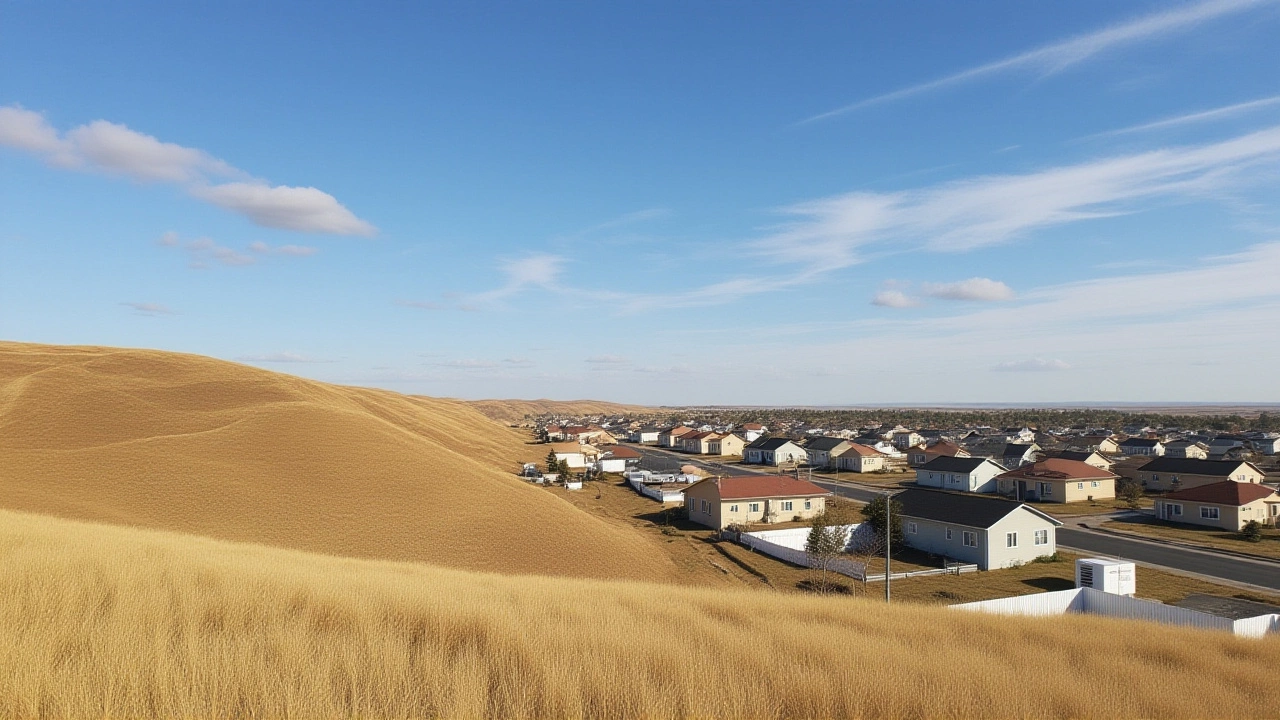When Chris Dolce, meteorologist at CNN warned that the remnants of Hurricane Priscilla would dump "near‑record levels of tropical moisture" over the Southwest, the entire region braced for an unusual October deluge. The National Weather Service Cheyenne office issued a Hazardous Weather Outlook at 2:53 PM MDT on Saturday, Oct 4, 2025, highlighting a flood‑risk‑laden weekend for a swath of counties stretching from Dawes to Niobrara. Meanwhile, Dan Pydynowski, Senior Meteorologist at AccuWeather echoed the concern, noting that “leftover moisture from Priscilla could spark flash‑flooding across southeast Wyoming and western Nebraska this weekend.”
What’s behind the looming rain?
The core of the drama is a classic weather pattern: an easterly jet‑stream dip off the West Coast that scoops up humid air from a decaying tropical system and thrusts it north‑eastward. In this case, Priscilla, now downgraded to a tropical storm, was skirting the Baja California Peninsula on Oct 7 when a mid‑level trough over Colorado began pulling the storm’s moisture plume northward. Satellite imagery from the Visible Infrared Imaging Radiometer Suite (VIIRS) showed a dense cloud ribbon hugging the Colorado‑Wyoming border by the morning of Oct 9, a clear sign that the atmospheric river was in place.
Forecast details for southeast Wyoming
The Cheyenne office’s Day 1 outlook (Oct 4) listed a Slight Risk (Level 2 of 5) for strong winds—gusts over 50 mph were possible around Arlington after dark. Days 2‑7 projected a gradual cooling trend of 10‑20 °F, followed by a surge of precipitation beginning Thursday, Oct 9. The National Weather Service predicts that the most intense band will roll through Friday night into Saturday morning, dumping up to 1.5 in of rain in the Laramie Valley and as much as 2 in in the lower elevations of the Snowy Range. In isolated spots, especially along slot canyons and low‑lying washes, flash‑flood watches have been posted.
For context, average October rainfall in the region hovers around 0.4 in; the forecast therefore represents a more than three‑fold increase in just 48 hours. Temperatures will dip to the mid‑40s °F in Cheyenne, a stark contrast to the 60‑degree highs recorded earlier in the week.
Potential impacts and safety tips
Local officials in Laramie County have urged motorists to avoid non‑essential travel on county roads after dusk on Saturday, when slick surfaces and sudden flash‑floods are most likely. The Wyoming Department of Transportation has pre‑positioned sandbags in flood‑prone zones around the North Platte River, and the State Emergency Management Agency is ready to issue evacuation orders for any communities cut off by rising waters.
Residents in the affected counties—particularly in Goshen, Platte, and Niobrara—should keep a battery‑powered weather radio handy, as cell towers can go down during heavy downpours. If you’re camping or hiking in the Laramie or Snowy Ranges, abandon low‑lying trails at the first sign of fast‑rising water; even a few inches can turn a creek into a torrent.
Historical context of tropical remnants in the Southwest
What makes this episode stand out is the timing. October is typically a dry transition month for the High Plains, yet the Pacific basin has been unusually active. In 2017, the remnants of Hurricane Hilary brought similar rainfall to Arizona and New Mexico, prompting flash‑flood warnings in Tucson. In 2020, Hurricane Zeta’s moisture helped produce record October rains across New Mexico, though Wyoming escaped the worst of it.
The National Oceanic and Atmospheric Administration (NOAA) notes that such “atmospheric river” events have increased in frequency over the past two decades, likely tied to broader climate shifts that keep the ocean warmer for longer. While a single storm isn’t proof of climate change, the pattern of near‑record moisture in an otherwise dry month aligns with what climate models have been warning about.
Looking ahead: what’s next for the storm system?
Priscilla is expected to dissipate completely by Oct 12 as it loses its core energy over the Gulf of California. However, the jet‑stream dip that launched the moisture northward will linger, meaning a secondary wave of light rain could linger into the following week, especially across the Four Corners region. Meanwhile, forecasters off the Atlantic coast are tracking a separate tropical wave that could become a named storm in the Caribbean later in October, potentially setting the stage for another round of moisture surges.
For now, the priority is to stay safe through the immediate rain‑and‑wind event in southeast Wyoming. As always, heed local advisories, keep emergency kits stocked, and stay tuned to the Cheyenne National Weather Service office for updates.
Frequently Asked Questions
How will the rain affect traffic in southeast Wyoming?
Roads in Laramie and Platte counties are expected to become slick, especially after sunset on Saturday. The Wyoming Department of Transportation has warned drivers to expect reduced visibility and possible road closures on low‑lying county highways. Travelers should allow extra time, avoid non‑essential trips, and keep an eye on local traffic alerts.
Which areas are most at risk for flash flooding?
Slot canyons, washes, and small streams in the Snowy Range, Laramie Valley, and the North Platte River basin are the hottest spots. The Hazardous Weather Outlook highlights the North Platte floodplain near Cheyenne and the lower Laramie River as zones where water could rise quickly, catching hikers and residents off guard.
What caused Hurricane Priscilla’s moisture to move so far inland?
A dip in the West‑coast jet stream acted like a conveyor belt, pulling the storm’s humid air north‑eastward. This atmospheric river pattern, combined with a weakening tropical system, allowed the moisture to travel over Colorado and into the High Plains, fueling the heavy rains forecast for Wyoming.
Is this type of event becoming more common?
NOAA’s climate reports indicate an uptick in atmospheric river events that transport tropical moisture into the interior western United States. While a single storm isn’t definitive proof, the trend aligns with climate projections that suggest warmer oceans will fuel more moisture‑laden systems.
What should residents do to prepare?
Gather an emergency kit with water, food, flashlights, and batteries. Secure outdoor items that could become projectiles in strong winds, and elevate valuables if possible. Stay informed through the Cheyenne National Weather Service and heed any evacuation orders.




Write a comment